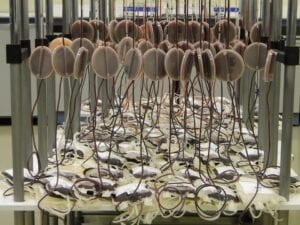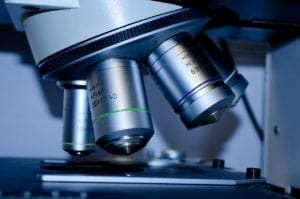Blastic Plasmacytoid Dendritic Cell Neoplasm (BPDCN)
What is blastic plasmacytoid dendritic cell neoplasm?
Blastic plasmacytoid dendritic cell neoplasm (BPDCN) is a rare and aggressive form of cancer in the bone marrow and blood. It has the potential to affect many other organs throughout the body, and is often characterized by skin lesions.
What are the symptoms of blastic plasmacytoid dendritic cell neoplasm?
Common symptoms of this cancer include:
- Night sweats
- Fatigue
- Purple skin lesions
- Fever
- Stomach pain
- Enlarged lymph nodes
Medical professionals compare BPCDN to leukemia or lymphoma in terms of disease characteristics.
What causes blastic plasmacytoid dendritic cell neoplasm?
This is a newly named condition, being standardized by WHO in 2008. There is little known about it, as there has been little research and little awareness. Because of this, medical professionals are unsure of the cause.
How is blastic plasmacytoid dendritic cell neoplasm diagnosed?
Obtaining the correct diagnosis of BPCDN can be difficult, it is often not reported or misdiagnosed. The most common misdiagnoses include acute myeloid leukemia, melanoma, and non-Hodgkin lymphoma.
Skin lesions are a common symptom, so doctors typically look for them when diagnosing this cancer. They will also utilize morphology, flow cytometry, immunohistochemistry, and cytogenetics.
What are the treatments for blastic plasmacytoid dendritic cell neoplasm?
BPCDN is a newer condition, being named in 2008. Because of this, there is no standardized care yet. Many doctors use chemotherapy regimens that are typically applied to acute myeloid leukemia or acute lymphoblastic leukemia. Some doctors use the CHOP regimen.
While treatment can lead to remission, patients with this form of cancer typically relapse.
Where can I find out more about blastic plasmacytoid dendritic cell neoplasm?
BPDCN Articles

New Partnership Agreement Will Commercialize ELZONRIS for BPDCN in Japan

Experimental Antibody Drug Conjugate Shows Promise in BPDCN


This Treatment for BPDCN is Having an Impact on the Lives of Patients

FDA Approves an Experimental Treatment of Various Blood Malignancies for Clinical Trials








